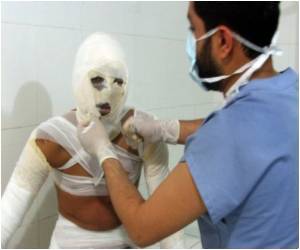
Inflammation occurs in response to injury. It includes the release of proteins that can trigger wound healing. But too much inflammation can damage healthy tissue.
Researchers wrote that their findings could "serve the purpose of better understanding the biological mechanisms behind smoke inhalation injury."
In the United States, about 40,000 people are hospitalized for burn injuries each year. As many as 20 percent of fire victims also have smoke-inhalation injuries.
At Loyola, smoke inhalation is rated from 0 (no injury) to 4 (massive injury). Researchers conducted an observational study of 60 adult burn patients, including nine patients who had Grade 0 inflammation, 15 who had Grade 1, 15 who had Grade 2, 18 who had Grade 3 and three who had Grade 4.
The study included an examination of proteins called cytokines contained in fluid flushed out of patients' lungs. (Cytokines are the so-called hormones of the immune system.) Researchers looked at 28 cytokines associated with inflammation, and found that 21 were at their highest in patients with the most severe smoke inhalation injuries. (The inflammatory proteins included interferon-γ, granulocyte-macrophage colony-stimulating factor, monocyte chemotactic protein-1 and several interleukins.)
Advertisement
Senior author of the study is Elizabeth J. Kovacs, PhD, director of Loyola's Burn and Shock Trauma Institute. First author is Joslyn M. Albright, MD, a research fellow in the Burn and Shock Trauma Institute. "This study is an excellent example of clinicians and basic scientists working together," Kovacs said.
Advertisement
Source-Eurekalert













